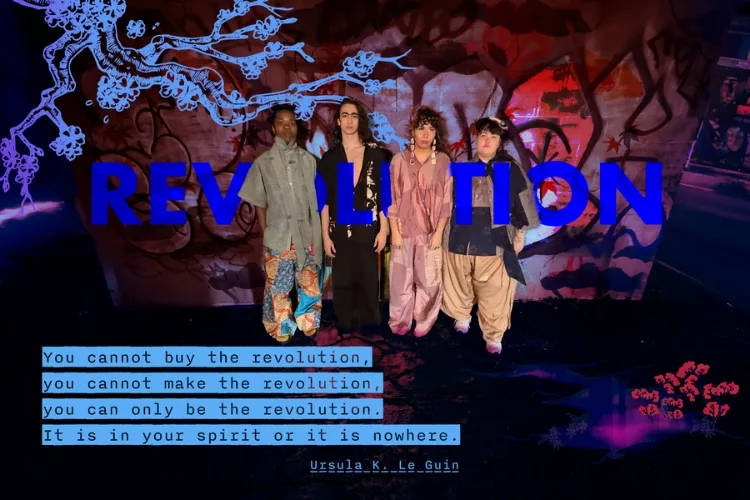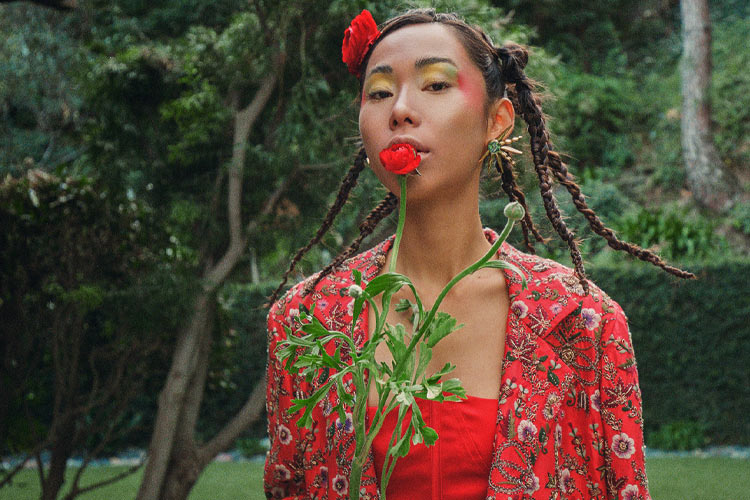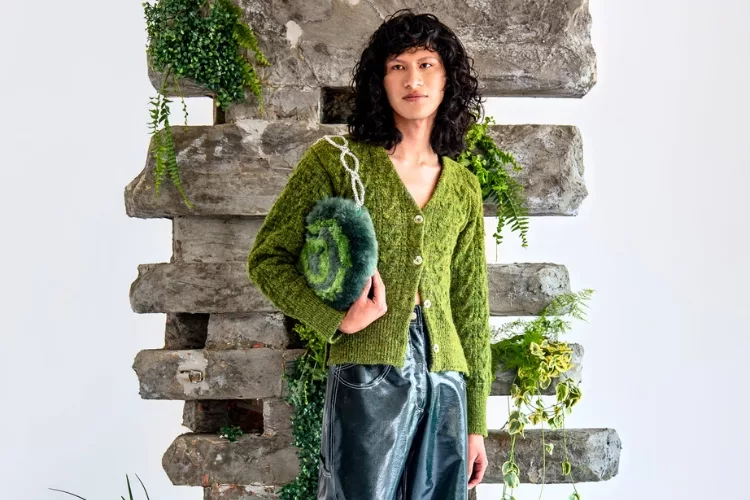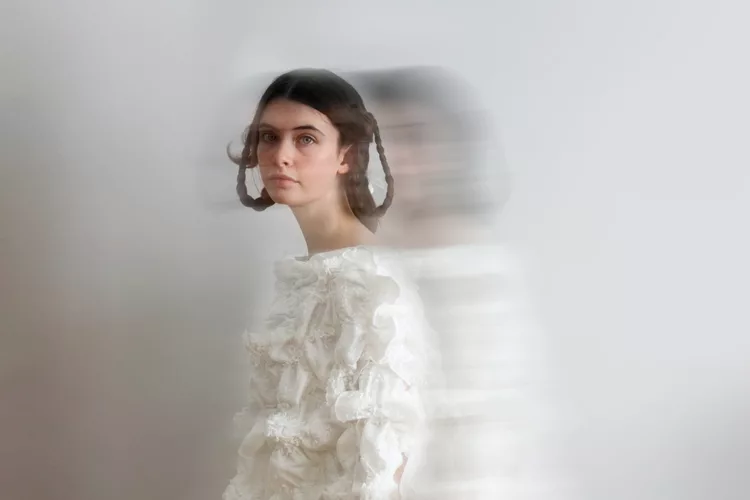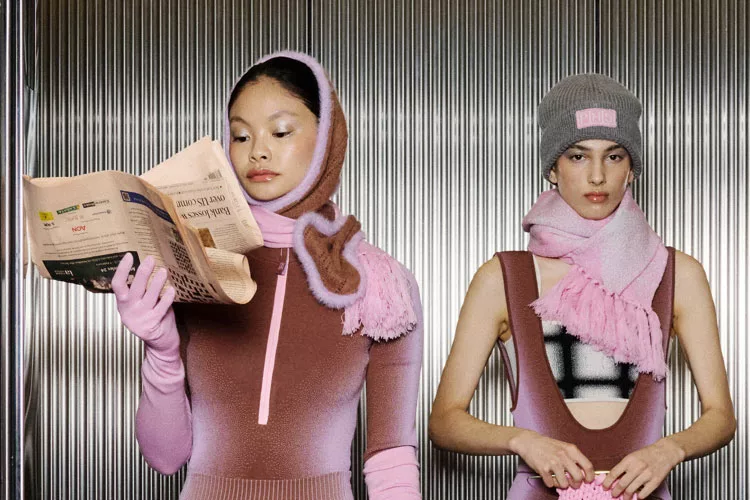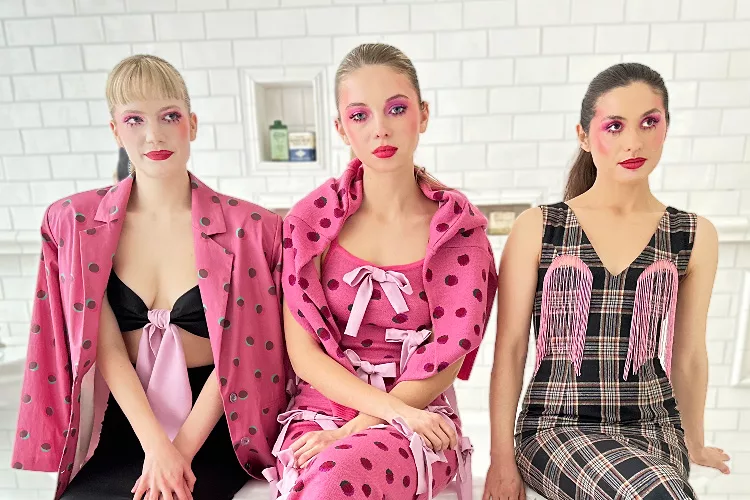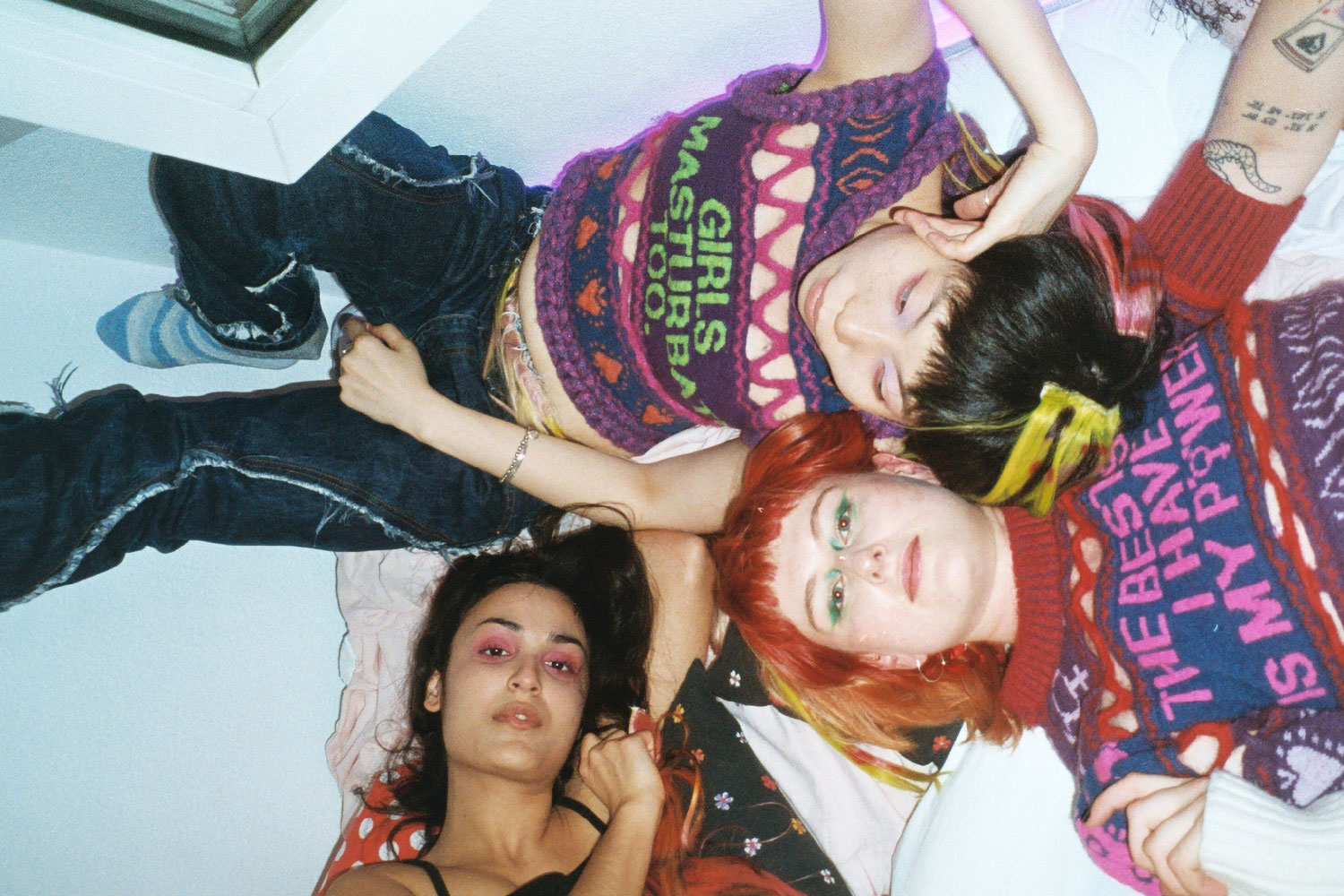
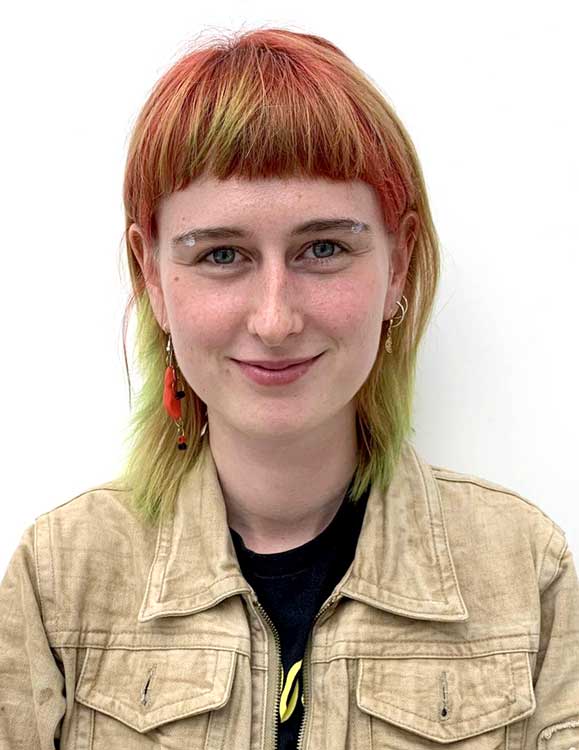
Tatjana Haupt, is not your conventional young designer. Based in France, Tatjana, who often goes by the name Tati, is pushing fearless feminism and empowerment, one knit design at a time. Her work playfully juxtaposes different polarities: between the themes of punk and folklore; and between open messages about sex and political movement. Ultimately, they call for a paradigm shift in our view of female sexuality.
In Tati’s world, knits are not to be seen as cozy layers for the chilly weather, but as political tools. In a way, her provocative designs are akin to marches of public demonstration. Similar to the quest for power of women soldiers and heroines in folklores, Tati’s collection – “The power of my hands”, shows how women can find the same power during sex by reclaiming the rights to be in total control of their bodies, and how they use them. The designs are “armors” in the form of soft knit: the panties decorated with pubic hair, the stockings with leg hair, or the jumpers with a jacquard on top that prints in bold “The best sex I have is my power”.
Due to its private nature, the topic of sex is still often left out of feminist movements. But our view of sex is still highly sexist: many women are still being taught how to alter their bodies and how to act to appease men, instead of being educated about their reproductive organs. Through her work, Tati leverages a new platform for sex education, one that liberates women from imprisoning standards, instead of forcing them to be standard-conforming. “I wish I didn’t have to make jumpers talking about sex and masturbation. But here we are in the 21st century and still we have to talk vulvas.”
We had the chance to chat with this exciting designer who was also one of 12 finalists in the Fashion category of the 2022 International Talent Support (ITS)
Jacqueline Pham/NKM: Hi Tati! Congrats on being a finalist at ITS 2022! What were your most memorable moments on your ITS journey?
Tati: Thank you. 🙂 I think meeting all those talented and inspiring people from around the world and getting an insight of their vision and dreams about how to revolutionize and reinvent fashion was the most memorable moment.
How did you get started as a designer? Walk us through your journey as an artist.
Initially I wanted to study Fine Arts after High school or become a teacher but then when I passed by the Fashion department during the open days I just wanted to give it a shot. I was lucky I got accepted as I applied only with my paintings and sketches. During my BA which I did at the Academy of Design in Basel, Switzerland I got to know more about knitwear and loved it. So I decided to pursue a master’s in Knitwear for Fashion at the Institut Français de la Mode.
I quickly saw that body culture is quite different in France compared to Germany and Switzerland. France has a more conservative view on women, how they have to dress, how their body and hair should look like. Whereas, I believe, in Germany it seems like people are more open-minded, more free and more accepting of body hair and nudity for example.
So moving to Paris provoked me to talk more about feminism, which is also rooted within my own experience. My mother taught me that I can pee on the street the same as a man! My knitted armor should support the feeling of strength, protection and power.
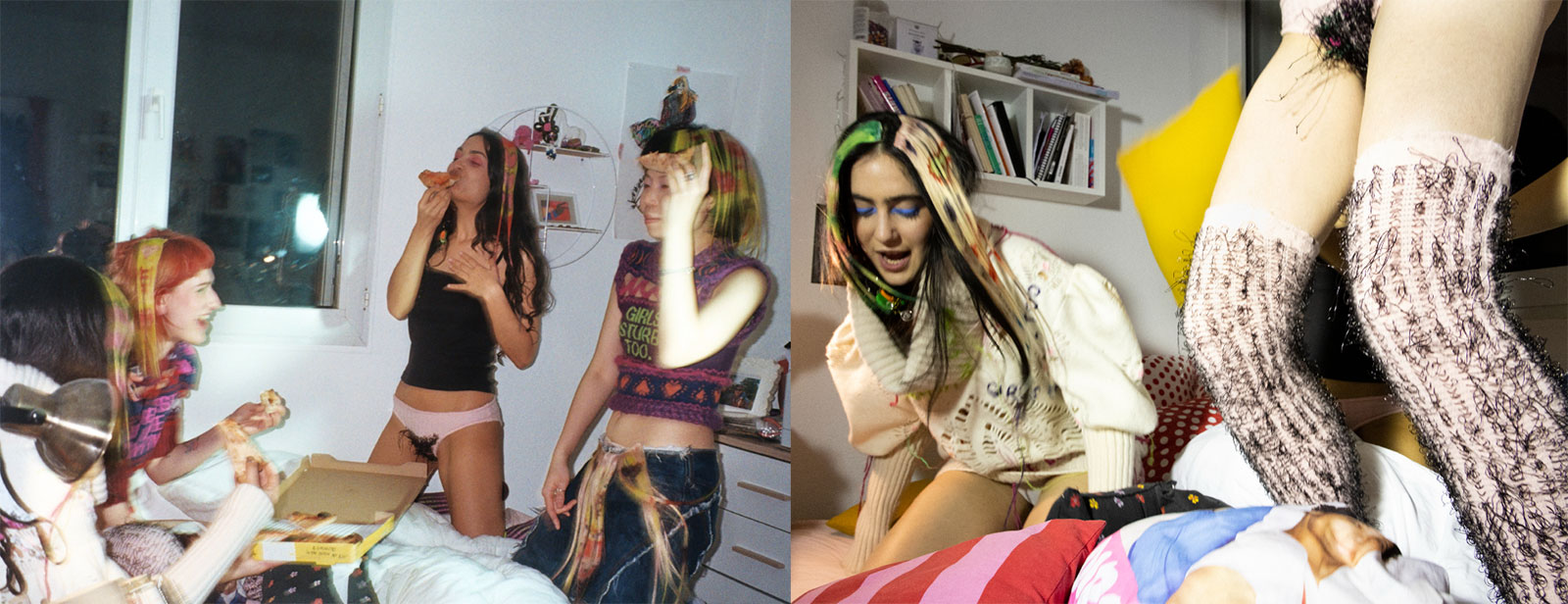
Let’s talk about your risque designs that exhibit women’s body parts which are usually hidden, or even shamed by social standards. How did people initially respond to your designs?
There are many mixed reactions. Mostly positive but also intrigued, maybe shocked and intimidated. At my final jury one of the jury members said she wished young girls could be reeducated with my vision and collection. I also had many people thanking me for speaking up about hairy legs and pussies.
One of your best-known designs is the jumper that says “The best sex I have is my power”. Tell us more about your view on female sexuality, empowerment, and the connection between the two.
This quote is from my good friend Boya Wen (@boya_0805). She is an amazing Womenswear Designer by the way! To answer your question I think that female sexuality just hasn’t been fully explored yet nor well taught. I highly recommend the book “The Wonder Down Under” by Ellen Støkken Dahl and Nina Brochmann to anyone including men! I just discovered it last year during my research for my MA collection. I think women don`t know enough about their own sex which needs to be changed. Knowledge is power, right?
An important theme for your designs is female genitalia. Why?
After reading the book “The Wonder Down Uunder” I realized how little I know about my own sex organ and my own pleasure. I was educated to please men my whole life, and it was only when I turned 25 and moved to Paris that I realized: something is not fully right here!
It was a turning point in my life. Today I think it’s related to a lack of education starting from a very young age. My grandmother told me that masturbation is bad for girls and it may cause problems having a child. Isn’t that sad? I can speak for many of my female friends that talking about their own sex and pleasure is something they find very uncomfortable. It just makes me angry and I don`t understand why it has to be like this. I want to speak about women’s genitalia because I think it is so important. Look at what is currently happening in the U.S. (ed. note: the overturn of Roe V Wade) Isn’t it unbelievable in the 21st century? And there you go. Women’s rights are still denied and that’s why we have to talk more about the vulva.
Can you take us behind the scene and show your process from material sourcing to finished products?
As a knitwear designer you are one step closer to the raw material since you are selecting the initial yarn. My sources come from different places. A lot of companies offer deadstock which we got sponsored as students. There is a place in Holland called KOBOR which sells only deadstock yarns. Last year I went to a sustainability fair where I found a company which does prints on upcycled fabrics called “House of U”. I think with every project I am trying to find a better solution for our environment even while being a maximalist with many colors. The great thing about knitwear is that you can also get a lot of wool products which are 100% biodegradable. Based on these resources I am trying to find a good middle way. Most of my pieces are made from recycled materials but then I also have pieces which are biodegradable as they are made out of pure wool and mohair.
Where do you find used knit and other materials?
There is a store in Paris called “American Supply”. They sell many interesting materials and they also offer a lot of sustainable resources. There is another place in the Netherlands called KOBOR. It is run by a guy who has thousands and thousands of cones from factories that were shut down. There are many companies in the north of Italy offering a large scale of alternative yarns made out of algae or recycled water bottles. It is just a matter of choice and research.
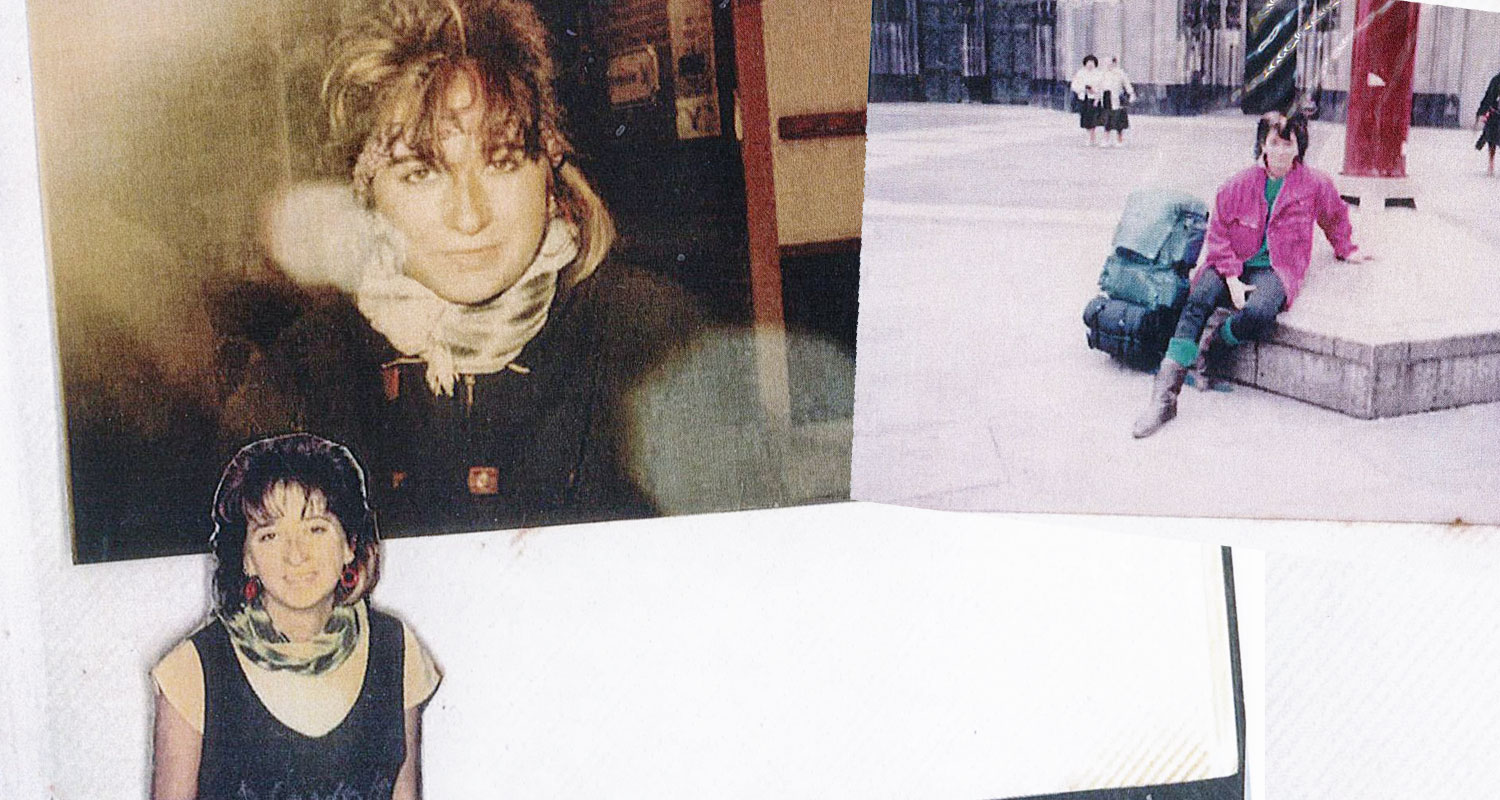
Growing up, who were the women that inspired you? Who were your heroines?
My grandmother and my mom are my biggest heroines but I am also obsessed with Greek mythology, women sculptures and heroines. To tell you the truth, I wasn’t that close with my grandmother. She was very strict and also quite subordinate. She would have not dared to speak up or to risk anything. At the same time she had this huge knowledge of knitwear, crocheting and sewing. As a kid I was too impatient to learn from her. My mother on the other hand was the complete opposite, she used to be a punk and she was one of the only women studying computer science in her time. Both women taught me the importance of being oneself and standing up for women’s rights.
What do you think is the one thing about feminism that people need to know more of and the one thing about feminism that people misunderstand?
The misunderstanding is that feminism is only for women and made to separate them from men. It’s about equality for all. Everyone has to be a feminist. Only together can we grow.
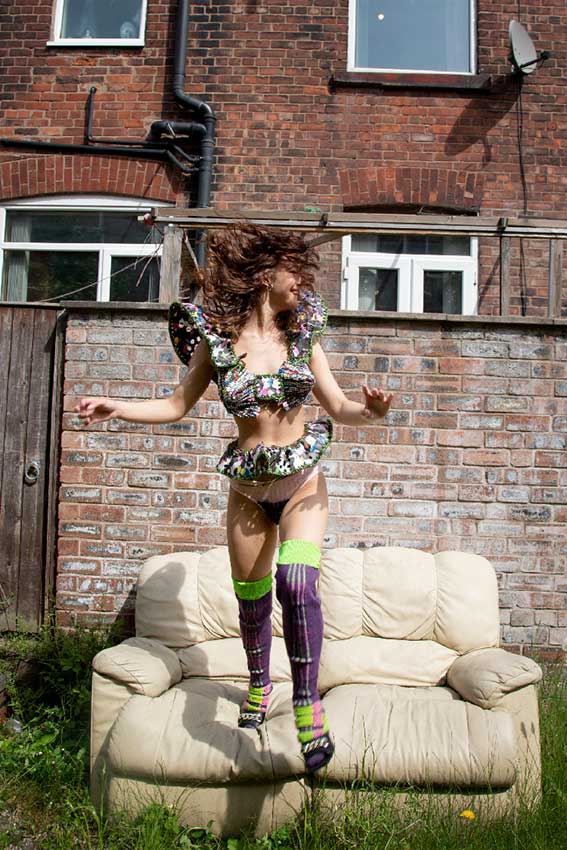
Still to this day the majority of girls are taught to look perfect, act perfect, instead of taking risks, speaking their truth, and finding their power. How can fashion play a role in pushing forward the message of positive female sexuality, body positivity, and women empowerment?
Fashion has always been a way to express who we are and what we believe in. I even think that people who don’t care are communicating something. For me it is a way to show my beliefs, who I am and it is fun. It is almost like a carnival and its origin also lies in expressing one’s political beliefs. We make a choice of what we want to say or not say. Even saying nothing is saying something.
My collection is maybe a bit like a comic. I made hairy socks because everyone is shaving their legs. Why? Most of my friends do it because everyone does it but they don’t even question why men don’t shave their legs. Why do I have to look like a baby and shave my vulva? My mother told me that in her time no one would shave anything. Shouldn’t we teach our daughters to stay true to themselves and who they are? Why are we so influenced by what others are thinking so much?
I think we have to teach our daughters to stay true to themselves, reflect on how they feel comfortable the most and be confident and authentic about it.
We should choose clothes that support this feeling. In the end I wish I didn’t have to make hairy socks and underwear. I wish I didn`t have to make jumpers talking about sex and masturbation. But here we are in the 21st century and still we have to talk vulvas.
A quote to live by?
Stay true to yourself and always follow what you believe in. 🙂 Educate yourself!
–Jacqueline Pham
Related Articles
Safe Sex Turns Me On…an interview with Nate & Hila
Culture Dose | Bitch | Disclosure | Getting Curious
One to Watch: Abiola Onabulé The London designer who brings Nigerian heritage
One to Watch | Erika Maish




